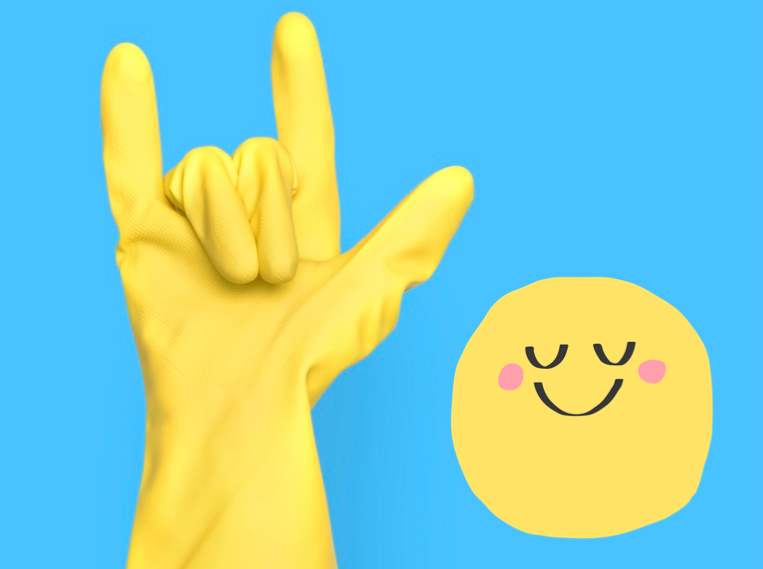
If your immediate reaction to this thought is “Ugh. I don’t wanna!”, I get it.
For most of my life, cleaning and tidying felt like something I should do.
I didn’t see the point of it.
I thought, “Why bother cleaning when it’s only going to get messy again?”
But over time, I’ve experienced a shift in my thinking. I’ve come to realise tasks such as cleaning, tidying, decluttering, and organising are critically important to staying focused and calm and achieving goals.
In this blog, I want to share a simple way to reframe tidying, cleaning, and organising. Rather than feeling like you’re burdened by an endless list of chores, this simple reframe will help to decrease psychological resistance. It will leave you feeling motivated to tackle your piles of mess.
Sometimes things happen in life that cause us to view ourselves in a particular way (e.g., “I’m a messy person” or “I’m the sort of person who leaves my work until the last minute”). These labels can be hard to shake. Here’s an example from my own life . . .
When I was in high school, I had a cooking teacher (Mrs S) who had a knack of making students feel really small.
I never cooked at home as a child, so I felt anxious and out of my depth in cooking class.
A lot of things went wrong in that class. I burnt my muffins and failed to present my food nicely when it was being assessed by Mrs S. I also broke a large ceramic mixing bowl at which point my cooking buddy swore out loud and the entire class went silent. We were mortified.
Yes, you could say these were great learning opportunities. But it certainly didn’t feel like it at the time.
Cooking class was something I came to fear. Why?
Mrs S was mean. She was particularly nasty and cruel with the way she delivered feedback.
She made Gordan Ramsey seem nice. Her comments were delivered in a tone of disgust and moral superiority. I remember one student breaking down in tears and crying the entire lunch break after receiving feedback from Mrs S.

Mrs S would say things like . . .
“Why is your place mat so far out? Who eats their meals like this? What’s wrong with you? It should be closer to the edge of the table!”
“What is with these crumbs on the table? This is disgusting!”
“If I was your mother, I would be so ashamed!”
Some of her comments were fair (yes, the crumbs on the table weren’t a great look). But my cooking buddy and I were not grubs. Yet her tone left us feeling like we were.
From a young age, I came to view myself as a messy and disorganised person.
When I started ‘adulting’, the only reason I cleaned and tidied my house was because that’s what I believed you were supposed to do as an adult. Adults should keep a tidy house, right? Adults need to vacuum the floor and do the dishes, yeah?
The problem is feeling like you ‘should’ or ‘must’ do something isn’t very motivating. When you feel like you ‘should’ clean and tidy things up, your brain says “Boring! This feels like a chore. No thanks!”.
There is another way to think about cleaning, tidying, and organising your stuff . . .
These tasks are all ways to be kind to your future self.
In the book ‘How to keep house while drowning’, KC Davis explains cleaning and tidying are acts of self-care. Tasks like vacuuming the floor, washing your clothes, and doing the dishes are all ways to be kind to yourself, particularly your Future Self.
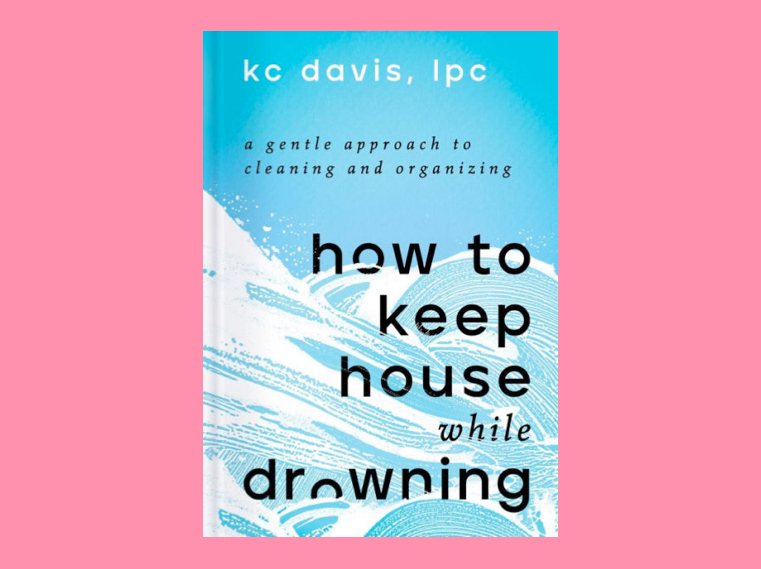
The psychological concept of your ‘Future Self’ refers to the idea of perceiving and connecting with the version of yourself that exists in the future. It involves considering the long-term consequences of your actions and aligning your present behaviour with your goals.
Studies show when you can get connected to your Future Self you’re more likely to take action towards your goals (e.g., sitting down and studying for a test) rather than opting for short-term immediate gratification (e.g., going on TikTok).
With this simple reframe, Davis suggests referring to chores as being ‘care tasks’ and cleaning as ‘resetting the space’.
In other words, when your study space starts to feel out of control and piles of papers start to accumulate, you can gently say to yourself “This space is no longer working for me. It’s time for a reset”.
Similarly, Dr Helen Owten states in her book ‘Studying as a Parent’:
“Cleaning and tidying the house each weekend (or every other weekend) means that you can at least start the week in some kind of order.”
As I ‘reset my space’ (i.e. tidy my home) on the weekend, I’m telling myself:
“This is time well spent. When I wake up on Monday morning, I’m going to be ready to go. I’ll feel calm and in control”.
That sense of order sets the tone for the day and the rest of the week.
In a nutshell, cleaning and organising helps you to function better.
When you feel calm in your space and you can easily find what you need, you’re in flow. Instead of feeling overwhelmed and stressed out, you feel confident and more in control.
IKEA catalogues, influencers, and decluttering gurus have drilled into our psyches the idea that our space needs to look a certain way (i.e. polished perfection).
For example, a YouTube video posted by Khloe Kardashian shows her stacking biscuits around the edges of a glass jar to make it look more visually appealing.
This video has been viewed more than 6.7 million times and has inspired many people to start storing biscuits like this. Needless to say, this is a true waste of life energy.
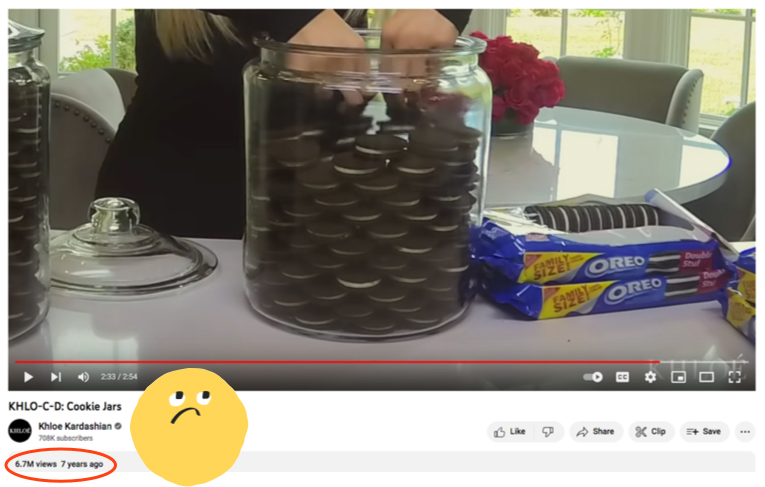
Here’s a solid tip: resist the urge to watch videos of influencers or the rich and famous organising their homes. The polished perfection will mess with your mind.
If you try to emulate the lives of influencers and celebrities, you’ll feel miserable.
Plus, there’s no guarantee you’ll end up with a functional space that serves you well.
You can have a study space/home that looks organised and beautiful but still struggle to find what you need. It’s easy to become obsessed with what your space looks like rather than focus on how your space can best serve you to help you achieve your goals (the latter requires some deeper thought and consideration).
So, forget the unrealistic standards. Create your own standards and a space that works for you.
Two years ago, my cooking buddy from high school (the one who swore loudly when the mixing bowl smashed into pieces) invited me to attend her housewarming party. It was the first time I had seen this friend in many years.
She had just moved into her new home. At the party, I couldn’t help but notice a couple of things:
1) My friend was a great cook (she was like an Italian nonna serving up delicious food); and
2) Her home was organised, clean, and tidy.
Despite our cooking teacher Mrs S making us feel like we were grubs, we had both turned okay. In fact, better than okay – we were doing great!
The moral of the story is this: cleaning and organising are skills that you can develop. Like cooking, they just take practice and cultivating good habits. A simple mental reframe can help to reduce mental resistance and kick-start the process.
What self-care tasks can you engage in today that will make your life a little easier tomorrow? No matter how small the task is, I challenge you to go do it.
Share This:
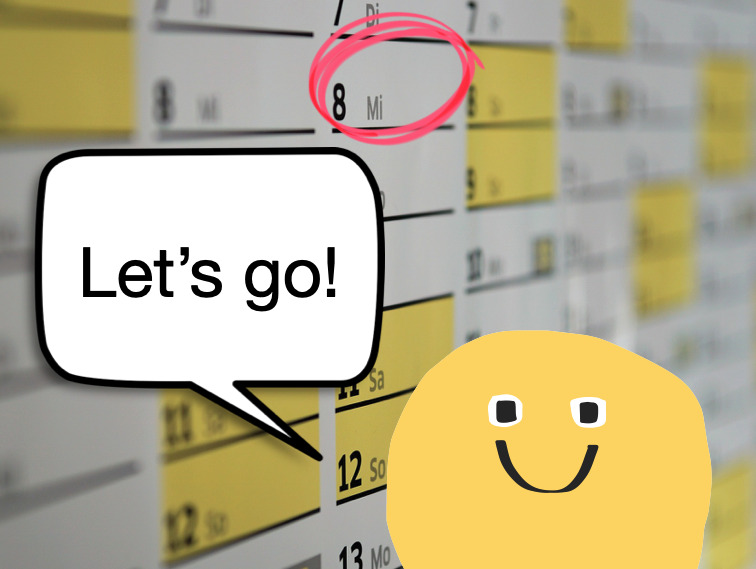
But how much time do you actually have?
It’s hard to get a sense just by thinking “My exam is in three weeks.” After all, three weeks sounds like plenty of time, right?
Don’t be fooled. This is your brain playing tricks on you.
No one ever has a full three weeks (504 hours) to prepare for an exam. Thrown into the mix is time for sleep, getting ready for school or work, working on assignments, socialising with friends and family, etc. Plus, you usually have more than one exam to study for.
But we can forget this. And when we do, we end up procrastinating with our work and it piles up for our future selves to deal with.
What’s missing is that your brain needs clear visual feedback. It needs to have a sense of the big picture (i.e., all your commitments laid out in front of it).
By using a year-at-a-glance calendar.
Earlier this year, I printed out a massive year-at-a-glance calendar (A0 size).
I scheduled all my upcoming presentations, holidays, important events (e.g., birthdays), deadlines, etc., onto the calendar and placed it in a prime position where I couldn’t miss it.
This calendar has made all the difference. It grounds me in reality, helps me feel more in control of my schedule, and gives me clear visual feedback. It also makes me think twice before I agree to take on a new project.
In the past, whenever I’ve said yes to a new opportunity, I haven’t always been grounded in reality. Too many times, I’ve been unintentionally cruel to future Jane.
Let me explain . . .
Back in 2016, I was on the home stretch with my PhD. The path forward was clear. After years of struggling with my PhD, the end was in sight. I was on track to hand in my thesis in a few months’ time.

But then something happened that threw me off course (well, erm, I threw myself off course).
I was asked by a company to run a series of workshops. Without even thinking, I said “Yes! I’d love to!”. It seemed like a great opportunity. One that was too good to pass up.
When I shared the news with my PhD supervisor, she seemed to think differently. Her face said it all: a mixture of concern and confusion.
“Why did you say yes to this? Do you need the money? What about your PhD? You’re so close to finishing”, she said.
The truth was I didn’t need the money. I said yes because without having my other commitments staring me in the face, I had all the time in the world. I was engaging in magical (delusional) thinking. I fantasised about having superhuman capabilities and being able to do it all.
I was wrong. There were only so many hours in the day, and something had to give.
To cut a long story short, pretty quickly the magical thinking wore off, and I regretted taking on the job. I had burdened my future self with a ridiculous amount of work and unnecessary stress.
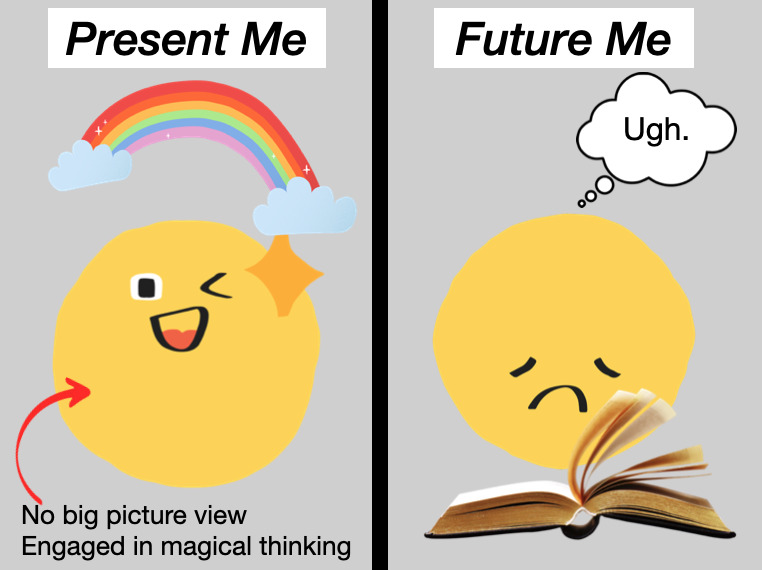
But worst of all, I had delayed handing in my thesis by several months. A few months might not sound like much in the big scheme of things. But when you’ve been plugging away at a PhD for seven years, every month becomes precious. I risked losing momentum.
If I could teleport back in time and place a year-at-a-glance calendar in my office space, I like to think that I would have prioritised my PhD over the shiny new opportunity.
I recently finished reading an excellent book called ‘The Extended Mind: The Power of Thinking Outside the Brain’ by Annie Murphy-Paul.
In this book, Annie explores nine principles for expanding our intelligence (note: these principles are not taught in schools). She argues that instead of pushing our brains to work harder and harder, we can use our bodies, relationships, and surrounding environment to boost our cognitive abilities.
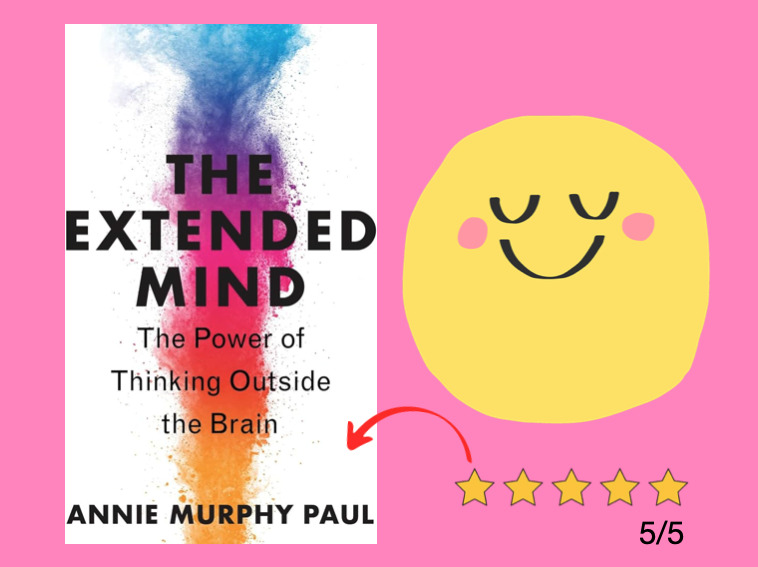
In the chapter called “Thinking with the Space of Ideas”, she writes:
“Whenever possible, we should offload information, externalize it, move it out of our heads and into the world. It relieves us of the burden of keeping a host of details “in the mind,” thereby freeing up mental resources for more demanding tasks like problem solving and idea generation.”
After reading this book, I understood why a year-at-a-glance calendar can be such a powerful tool. Seeing all your projects and commitments in one glance allows you to think smarter and more strategically.
These calendars also help to orient you in time. You can see how much time you have between now and doing the things you need to do.
Your projects and deadlines stare back at you every day. There’s no escaping them.
Seeing your life in this way also helps you to plan and pinpoint busy periods.
Here’s an example . . .
This month, I have more presentations scheduled than usual. This means I need to manage my energy levels, prioritise sleep, and eat healthily.
But a quick glance at my calendar tells me I have a few ‘free’ days before all these talks begin. I can use this time to cook a few meals to pop in the fridge and freezer to make life a little easier during this busier period.
One of the worst things I can do when I get busy is order takeaway food and sacrifice sleep to work. I refuse to do it as it always backfires. If I’m functioning at half capacity, my talks and work will suffer.
These calendars can also provide useful information to help you manage your energy levels, reduce ridiculous workloads, and avoid burnout.
Earlier this year, there was a week when I delivered more talks than usual. During this week, I found myself taking 15-minute power naps between talks to recharge before the next one. Even with all these power naps, by the end of the week, I felt tired. I drew a tired little emoji face on my calendar to represent this.
That tired emoji face is a constant reminder: you have mental and physical limits. Don’t overdo it.
It’s important to find a calendar that is both aesthetically pleasing and functional for you. This means you probably can’t just go to the shops and pick something off the shelf.
You could order a hard copy calendar online, but when the year is already well underway who wants to potentially wait weeks for their calendar to arrive in the mail?
You can purchase a digital download online and take it to your local print shop on a USB stick. Some templates display the month as a long list of days; whereas other calendars group the month into weeks, with each week on a separate line (see examples below).
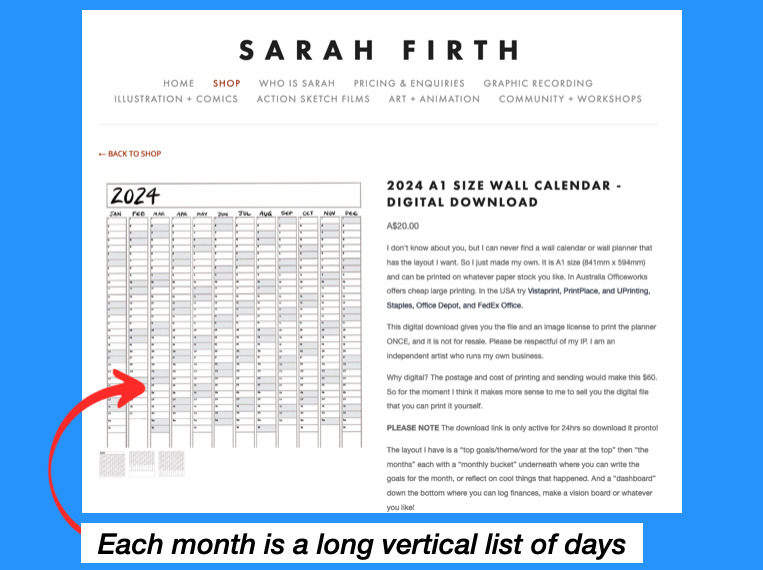
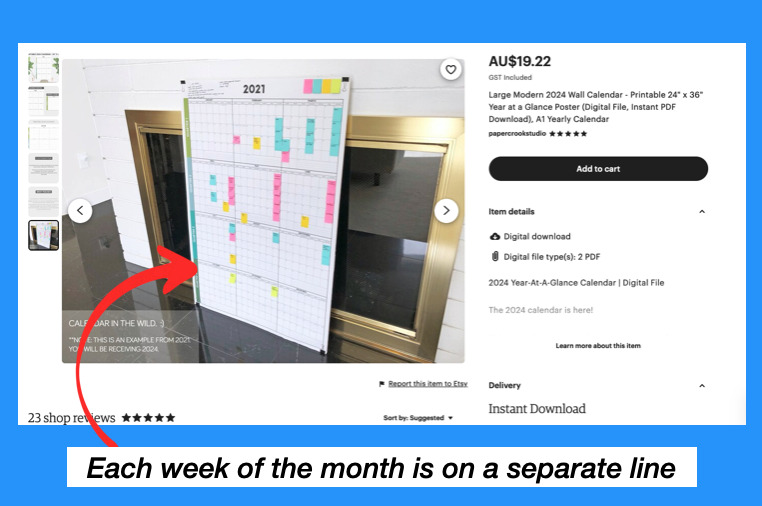
Alternatively, you could buy a monthly calendar, cut it up, and stick it together.
One of my friends suggested I try doing this. I gave it a shot, but my calendar looked like a failed arts and crafts project (with messy bits of tape plastered everywhere). Plus, the boxes were too small and cramped my style.
After some trial and error, I purchased a digital download from Etsy for $20AUD and printed it A0 size for $10AUD. All up, my calendar cost me $30AUD – money that was well spent.
The bottom line is you have to figure out what works for you and how much you’re willing to spend.
• Write on the calendar when all your exams, appointments, special events, and major projects will take place.
• If you don’t yet know the specific dates of each exam, note the week they begin and assume the worst-case scenario (your exams will be sooner rather than later).
• Consider laminating your calendar so you can use whiteboard markers on it.
• If laminating is too expensive, use sticky notes and washi tape instead.
• You can mount your calendar on core-flute material or foam board to give it a sturdier structure.
• Resist the urge to put every detail on your calendar. Focus on the big project deadlines, appointments, exams, etc. The details for what and when you work on each project can go into your weekly planner and/or on your to-do list.
• If you have the wall space, consider printing your calendar A0 size (841mm x 1189mm). You want plenty of space to write in each box.
In our noisy world where we are bombarded with endless opportunities, many of us would benefit from embracing analog tools like the year-at-a-glance calendar. These calendars help to ground us in reality and focus our minds on what matters.
If you have a lot going on in your world and find yourself saying “Yes!” to every shiny new opportunity that comes your way, do yourself a favour and create a year-at-a-glance calendar. Having your commitments stare you in the face every day is a simple but powerful way to live with greater focus and intentionality.
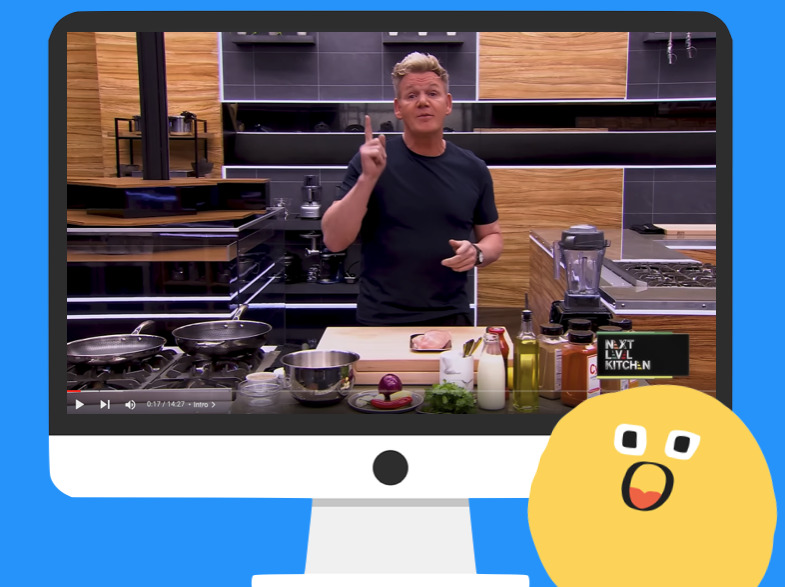
I recently watched a video of Gordan Ramsey cooking a ‘curry in a hurry’ (a butter chicken dish).
I was spellbound by the way Ramsey seamlessly cooked this dish. He was in flow and fully focused on the task of cooking the butter chicken.
What allowed him to whip up this dish plus a serving of rice in under 15 minutes?
Being organised helped a lot. Before he started cooking, chef Ramsey had all the ingredients and cooking utensils out on the bench, ready to go.
In chef’s speak, he had prepared the mise en place.
Mise en place is a culinary skill that can help us to study and work more efficiently. In this article, I explore this concept and how you can apply it to your life to help you stay calm, focused, and in control of your studies.
The mise en place is a French term that translates to “putting in place”. It means a place for everything and everything in its place.
Everything the chef needs is within arm’s reach. When it’s time to start cooking the dish, the chef knows where everything is. This allows the chef to focus on cooking the dish and stay calm and grounded under pressure.

In the book Kitchen Operations (a textbook for hospitality students and apprentice chefs), the authors write about the importance of being organised in the kitchen. They state:
“The ability to work in an organised manner is possibly the most important quality that anyone working in the preparation and service of food can demonstrate. You must develop this ability to complete the expected workload in the time available. Failure to be methodical in your approach will reduce efficiency and will lead to feelings of stress and frustration.”
The mise en place helps the chef avoid unnecessary stress and frustration.
Imagine the following scenario . . .
A chef starts cooking a pasta sauce.
The chef realises 10 minutes in that he is missing a key ingredient (tins of tomatoes).
The chef has to run to the shops to buy the tomatoes.
Chefs can’t afford to have that happen. They are time-pressured. They need to get meals out quickly to hungry customers.
The mise en place helps chefs avoid stressful situations like this. It can also help you decrease unnecessary stress, drama, and frustration associated with homework and study.
Before starting your work, set yourself up with everything you need to complete the task.
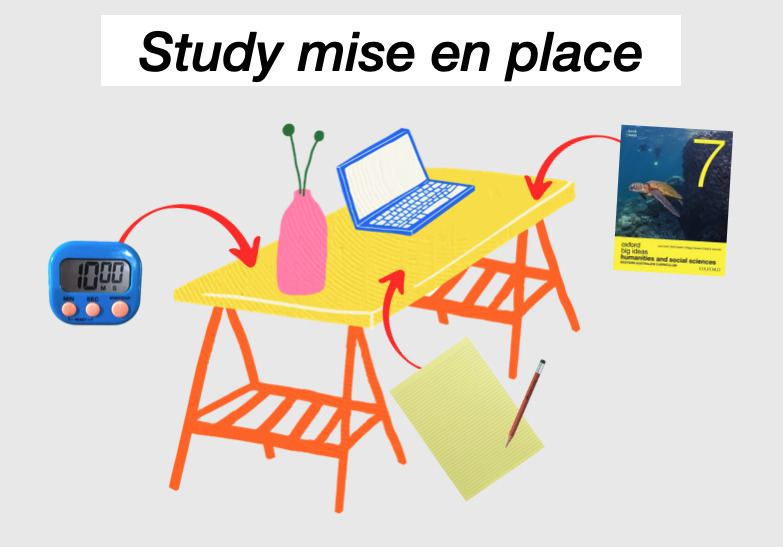
Think of this as the study desk mise en place. Ideally, you want to have a dedicated study space where everything is already set up. This saves you time, as you don’t have to set things up and pack things away after each study session.
But your desk isn’t the only space you can set up and prepare. In the world of study, you have other spaces you need to manage (e.g., a computer, school bag, pencil case, and locker). With each of these spaces, you need to ask:
“What items do I need in this space for my work to flow smoothly?”
It also helps to ask:
“What items don’t I want in this space?”
Just like a chef doesn’t want cockroaches, cats, and rats running around the kitchen and restaurant (or a visit from the local health inspector), there are things you want to keep out of your study space.
Remove anything that throws you off your game (i.e., makes you feel bad, distracted, overwhelmed, and upset) from your study space.
Here’s my list of things I want to keep out of my study space:
• My smartphone
• Long to-do lists
• Visual clutter
The point is to remove any friction points from your environment (anything that will slow you down and make it difficult to do your work).
The mental mise en place cannot be overlooked. This is the mental preparation part of the study process.

Ask yourself:
What must I do to mentally prepare myself for deep work/study?
Most of us can’t just scroll on our social media feed for an hour and launch straight into doing focused study. We need to get into the right headspace.
To be clear, I don’t mean you need to feel motivated, inspired, or in the right mood to study. Too often, we wait for motivation to strike, and it never comes. However, it certainly helps to be calm, focused, and grounded.
My mental preparation for the workday starts the evening before. Too many late nights have taught me that to wake up feeling calm and grounded, I need to go to bed at a reasonable hour.
When I wake up, I protect this mental calm by:
• Going for a walk or lifting heavy weights
• Doing a mini meditation (usually 3-5 minutes)
• Eating a healthy breakfast
• Avoiding checking my email and touching my computer first thing
• Journaling or mind mapping with pen and paper
I stay away from screens for as long as possible. This is essential for cultivating a calm mental state where I feel proactive and in control of my day.
I know I’m in trouble if I skip too many of the things on the list and start the day by checking my email. It becomes much more challenging to focus and get things done.
What is a pest of the mind?
It is anything that overstimulates the mind and leaves one feeling frenzied, scattered, and/or jangled.
Here’s the thing about learning information at a deep level: it requires you to slow down. You cannot rush it, like a 15-minute butter chicken dish.
But we engage with people, places, and things on a daily basis that speed up our thinking. In this overstimulated, wired mental state, learning feels like a hard slog.
Here’s a tip: start to notice the things that leave you feeling overstimulated. It can be incredibly liberating to cut back on these things or eliminate them completely from your life.
I am constantly tweaking my workspace and experimenting with different tools to help me click into a state of flow with my work. Here are some tools that I’m currently enjoying having as part of my study mise en place:
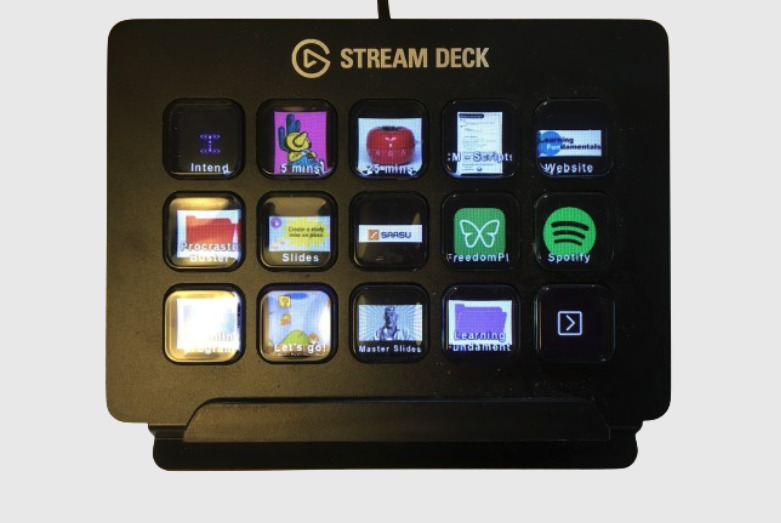
Technically, this is a gaming device that allows gamers who stream to switch scenes, adjust audio, etc at the tap of a button. I’m not a gamer, but I use my Stream deck to get started with various tasks and projects I feel resistance towards.
Instead of thinking, “Where is this file located? How do I get to it?” I tap a button on the Stream deck and it opens the file up. I tap another button, and it opens an application I frequently use.
No more frustrating clicking through numerous folders trying to find the document I need! The Stream deck helps to remove a big mental barrier and kick-start the work process with ease.
Stream decks aren’t cheap but if you can find one secondhand or on special like I did, they are well worth it.
Staying hydrated is super important. I fill a big jug with water every morning and place it on my desk with a glass. If water is within arm’s reach and I can see it, I find myself taking regular sips throughout the day.
I used nasty, cheap pens for years. Being a sucker for free stuff, I collected free pens at career expos and university open days. Without even realising it, these pens caused me a great deal of frustration and irritation.
These days, when it comes to pens, I don’t mess around with junk. There’s one pen I love using: the uniball signo (0.7). It’s a gel pen (you can find them at Officeworks). Writing with this pen is an absolute pleasure.

As Kevin Kelly says:
“Take note if you find yourself wondering “Where is my good knife?” or “Where is my good pen?” That means you have bad ones. Get rid of those.”
It’s super handy to have a notepad to jot down ideas and random thoughts as they arise. I recently discovered Rhodia notepads (a recommendation by The Pen Addict, Brad Dowdy). Writing on this paper feels like writing on butter!

Whenever I notice I’m procrastinating, I’ll set my timer for 10 minutes and say, “All I need to do is 10 minutes on this task. That’s all. Just 10 minutes”. I set the timer and away I go.
Other times, when my workspace looks like a mess, I’ll set a timer for 3 minutes and spend that time getting things back in order.
My planner tells me what to do and when to do it. For the last 6 weeks, I have been experimenting with Cal Newport’s time blocking method (planning my day in hourly blocks). It sounds torturous, but it’s strangely liberating.
When I open my planner, I can see what is happening for the week, but I don’t have a sense of the bigger picture. This is why I printed out a massive (A0 size) year-in-a-glance planner to schedule all my presentations, holiday breaks, special events, etc.
Having this calendar makes me feel more in control of my life. I can see when I have busy periods of presenting and when I need to balance those periods with extra rest time to sustain myself. I can also see events and deadlines relatively to where I am now.
These are just a few things I love having in my study/work mise en place. But we’re all different, so you need to figure out what works best for you.
When I recently asked a group of high school students what items they would need in their study mise en place, here’s what they came up with:
• Snacks
• Phone
• Pencil case
• Squishmallows
The first three suggestions didn’t surprise me, but the squishmallows sure did (the students were shocked that I’d never heard of a squishmallow before). I had to google them (they are soft toys).

But I get it.
A squishmallow is fun.
It’s comforting.
It makes you feel good.
If something makes you feel good, go put it on your desk. Because if you feel good, it will be easier to think and learn.
The mise en place is a skill that can help all of us (not just chefs) focus on the task at hand. The point is you need to make your study mise en place work for you. You need to find the combination of ingredients that hits the spot.
Like a top chef has their favourite chopping knife, you’ll have your favourite pen. Spend some time experimenting with various tools and different work setups. By creating a more streamlined and organised study space, you’ll get that time back. Plus, you’ll find it’s much easier to get going and keep going with your work.
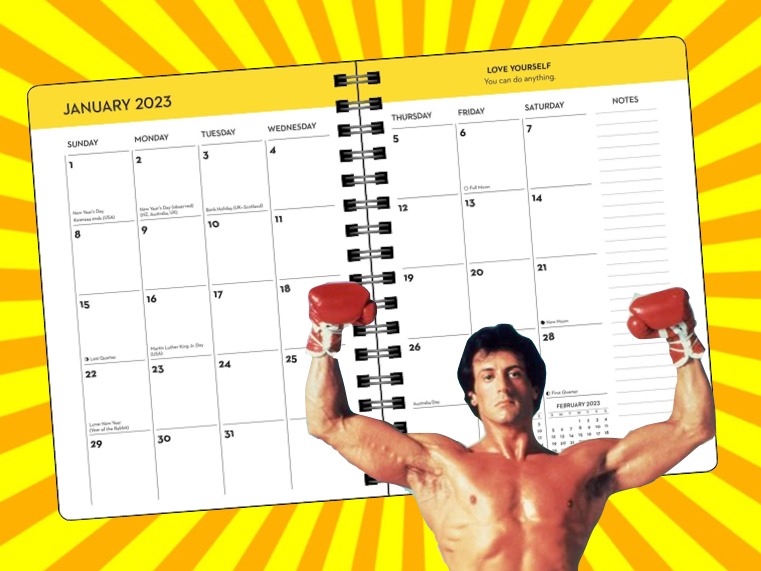
“I don’t need to use a diary/planner. My memory is good!”
Other students prefer to develop their own system.
For example, a year 11 boy came up to me following a presentation and he held out his arms. They were covered in notes to self, strategies from my session, and reminders he’d scribbled in blue pen.
He said he didn’t need a diary. Why? Because he could write reminders on his arms.
“What will you do when you run out of space on your arms?” I asked.
He didn’t miss a beat and quickly responded with, “I’ll use my legs”.
His system wasn’t fail proof but at least he had some kind of system. Many students don’t have a system to remind them of all their commitments.
How do I know?
Over the years, I’ve surveyed secondary students about their study and lifestyle habits.
What I’ve found is 70% of Australian secondary students say they have a school diary but they don’t use it.

Perhaps it’s because students associate this tool with having to do things that brings up feelings of discomfort. Or maybe they’ve felt forced to use a diary without anyone ever explaining the benefits of using one.
In this blog post, I’m going to explore whether you need to use a diary (you may not need one). If you decide this is a tool you want to use, I’ll share two simple tricks you can use to establish the habit of regularly using your diary.
Some people can get by without using a diary. But it’s not because they have greater mental powers or a superior intellect compared to other students.
You may not need a diary if:
1) Other people are micromanaging your life (e.g., your parents or boss); and/or
2) You don’t have a lot to do during the day or week (and therefore, there’s not much to remember).
Even if you can get by without a diary, it’s a good idea to develop the habit of using one. Here’s why . . .
In the not so distant future, you may have a part-time job with different shifts that vary from week to week. Perhaps you’ll find yourself studying at university with classes at different times and in different locations.
In other words, your life is going to be jam packed full of different activities and commitments.
It makes a difference to write down all of these activities in one place so you don’t forget what you need to do. A diary is a simple tool you can use to manage everything you need to do and bring a little order to the chaos of life.
When you get to this stage in your life, I’m also guessing that you won’t want your mum or dad doing everything for you. So, the sooner you can establish the habit of using a diary, the better!
I buy the same diary every year (this one). Yes, it’s a bit pricey. But I figure I can afford to splurge $40AUD on a deluxe diary/organiser once a year.

It has a bright yellow cover, which makes it easy to find when my house gets messy (and it gets messy!). You can view the entire week in one glance and there’s plenty of space to write and scribble (this makes it easy to plan and prioritise tasks). The cover also makes me smile (it states ‘YOU are a BADASS’).
I relate to this paper-based diary as being like my mini personal assistant. This tool lightens my mental load, decreases decision fatigue, and helps to keep me on track. It also prompts me to take action on certain tasks.
Every time I open up my diary, it tells me what I need to do, when I need to do it, and where I need to go.
“You have to go to the dentist at 8am on Monday.”
“The article is due on Thursday.”
“It’s mum’s birthday next Wednesday. Buy cake and pop round at 6pm”
Rather than holding all these random details in you working memory (and having them take up precious mental space), it makes sense to dump them in your diary.
We have a limited capacity to take in and process information at any one time. In a research paper called The magical number four in short-term memory psychological researcher Nelson Cowan argues that humans can only hold on average four chunks of information (plus or minus two) in their short-term memory.
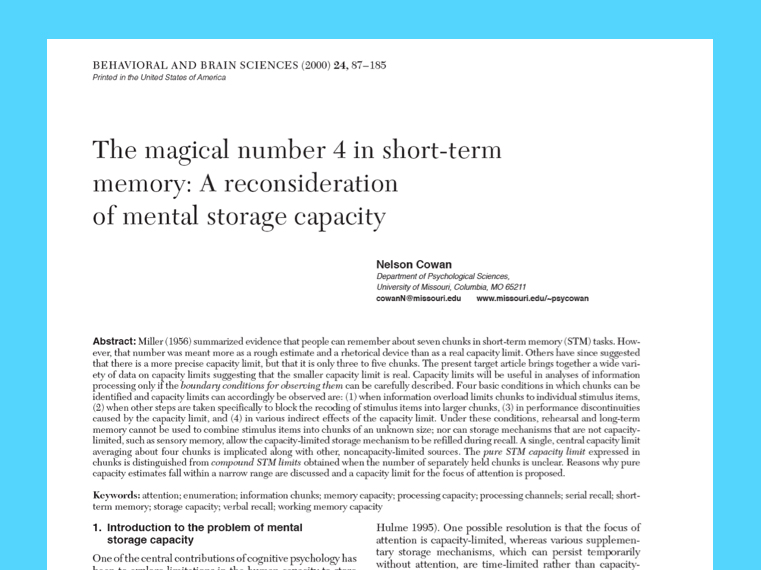
If you’re trying to hold onto all these random bits of information in your brain (e.g., “Buy cake for mum on Wednesday” and “Dentist on Monday at 8am”) this is going to deplete your finite brain power.
By cultivating the habit of using a diary, you can free up your precious mental resources. This means you can allocate your brain power towards more important cognitive tasks (e.g., learning new ideas).
I’m going to share two simple tricks to make it really easy to use a diary.
As soon as the teacher says a test is coming up or an assignment is due, write it down in your diary. Do it immediately.
This will only take 10-30 seconds to do but it will save you a lot of stress and drama later down the track.
Open up your diary and look at it every day.
You need to find a place in your daily routine to slot in opening up your diary and looking at what’s coming up. It could be after you have dinner or after having a snack after school. Use a pre-existing habit to remind you to open up your diary and look at what is happening.
In a nutshell, all you need to do is:
1) Write things down as soon as you’re told about them; and
2) Look at your diary every day.
What should you capture in your diary?
Write down anything that you need to remember (but probably won’t remember). For example, special events, things you need to bring to school/class, reading you need to do, and assignment due dates.
If all you do is follow the two tricks (write things down immediately and look at your diary every day), you’ll be extracting 95% of the value that comes from using a diary. In other words, you’ll feel more in control and less stressed.
But here are a few other things you can do to enhance your overall diary experience . . .

You can color-code your diary to make it more visually appealing and easier to read and organise.
Use different coloured textas to highlight different activities and events. I draw a blue box around school presentations, an orange box around community events, a light blue box around leisure/break activities, etc.

Sometimes when I’ve completed a task, I’ll add a sticker or a stamp to the page next to the task. This makes using my diary a little bit more playful and fun (rather than it feeling like a chore). It’s a nice way of taking a moment to celebrate completing a task before I move onto the next thing I need to do.
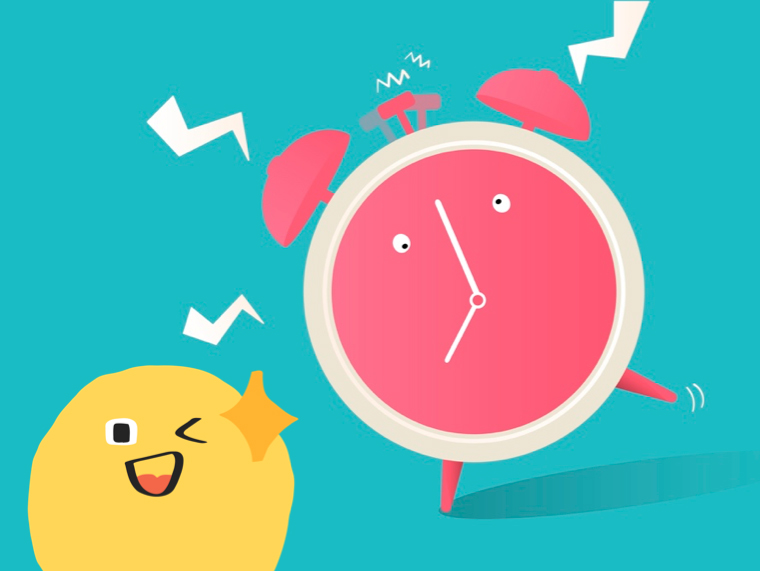
To avoid any nasty surprises, it helps to write down time reminders for important projects/tests/events, such as “Maths test in 7 days” or “Italian exam in 2 weeks”.
These reminders can help to combat procrastination and propel you into action. They make me realise “If I want to avoid a last minute scramble, I better get started today!”
A diary planner is the simplest system I’ve come across to help me manage everything I need to do in one place. But if you discover a better system that helps you to remember everything you need to do, run with that. Do what works for you.
The most important thing is you have a system that helps you to manage all your commitments. And preferably one that doesn’t involve writing all over your arms and legs.
Dr Jane Genovese delivers interactive sessions on learning to learn, combating procrastination, exam preparation, how to focus in the age of distraction, habit formation and much, much more!
Get FREE study and life strategies by signing up to our newsletter:
© 2024 Learning Fundamentals